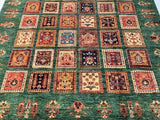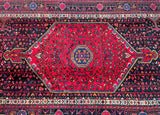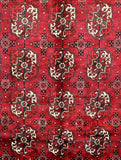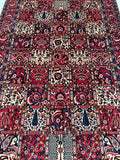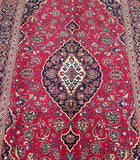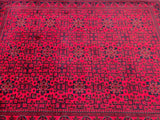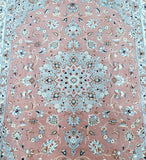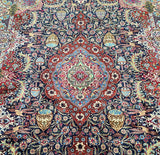Learn About Persian Rugs
What Makes Older Persian Rugs More Expensive?
What Makes Older Persian Rugs More Expensive? Debunking the Myth of Every Old Rug Being Valuable.
Persian rugs have captivated the hearts of interior enthusiasts and collectors for centuries. These timeless pieces not only enhance the look and feel of any space but also hold significant historical and cultural value. However, many individuals often wonder why some older Persian rugs come with a hefty price tag while others do not. In this blog post, we will debunk the common misconception that every old rug is valuable and explore the factors that contribute to the higher prices of antique Persian rugs. We will also provide you with valuable insights on what to look for when searching for an older rug to add a touch of history and elegance to your home.
Is Every Old Rug More Valuable? Contrary to popular belief, not every old rug is valuable. While age can add to the allure of a Persian rug, it does not necessarily determine its worth. A rug's value is influenced by several factors such as its condition, design, craftsmanship, materials used, and historical significance. Therefore, it is essential to consider these aspects to assess the true value of an older rug.
What Makes an Antique Rug More Valuable?
- Rarity: Antique Persian rugs that are rare or one-of-a-kind tend to command higher prices. This rarity could be due to limited production, unique design elements, or specific historical periods.
- Age: While age alone does not guarantee value, antique rugs from specific eras, such as the 19th or early 20th century, are often more sought after due to their craftsmanship and cultural significance.
- Design and Craftsmanship: Persian rugs are known for their intricate designs and exceptional craftsmanship. Antique rugs with complex patterns, elaborate motifs, and masterful weaving techniques are generally considered more valuable.
- Materials Used: The quality of materials used in an older Persian rug can significantly impact its value. Rugs crafted from silk or fine wool, hand-dyed with natural colors, are highly prized for their durability and vibrant hues.
- Condition: A well-preserved antique rug, free from significant wear, repairs, or stains, will generally fetch a higher price. However, minor signs of age and wear can also add to its charm and authenticity.
If you have an older rug and wondering what to look for in an antique rug, we have a few tips:
Fine Knots: The number of knots per square inch (KPSI) is a crucial indicator of a rug's quality. Higher KPSI generally signifies better craftsmanship and finer details.
Intricate Designs: Look for rugs with intricate patterns and motifs. These design elements showcase the skill and artistry of the weaver.
Rich Colors: Older rugs with vibrant, naturally derived colors tend to have higher value. These colors often age gracefully and add depth to the rug's overall appearance.
Patina: A desirable characteristic of older rugs is the development of a natural patina. This mellowing effect occurs over time, giving the rug a distinct vintage charm.
Origin: You can contact our staff at shoparug via email or phone and we might be able to help you find out the origin of your antique rug, please be aware not every old rug is valuable as explained in this blog and always try and keep your antique rug in good condition to increase the value of it over time.


